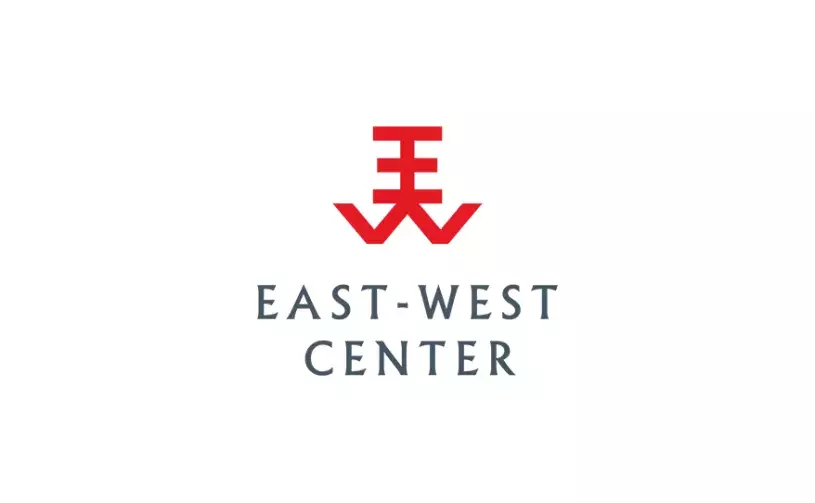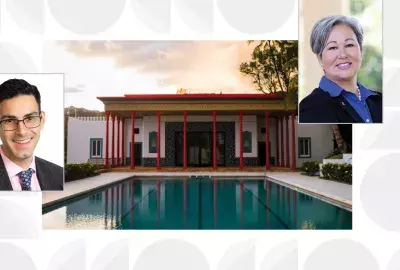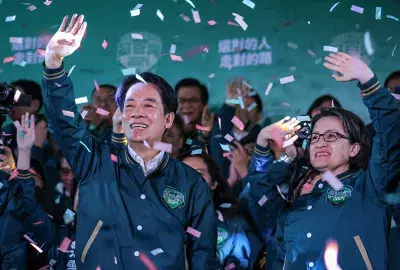Error message

By Marcus Noland
HONOLULU (August 23, 2019)—For three generations, the United States championed a rules-based multilateral trading system. That stance was overturned by the election of an avowed protectionist, Donald Trump, as president. It would be understandable for Asians to wonder if this shift amounts to a permanent change in U.S. trade policy, and if so, how to proceed.
Trump’s presidential campaign was notable in that it emphasized two issues—immigration and trade—that had seldom been in the forefront of U.S. presidential campaigns. But public opinion polls revealed that these issues were of growing importance to a sizeable number of voters whose preferences mirrored Trump’s protectionist positions.
Within a week of taking office, President Trump removed the U.S. from the Trans-Pacific Partnership negotiations. He then renegotiated the Korea-U.S. Free Trade Agreement to slow the movement toward free trade between these two partners, and his administration has imposed special forms of trade protection on many countries, notably China. These protectionist moves have been supported by many Americans.
Economics or cultural shift?
There are two broad interpretations of why Americans have become increasingly hostile toward both trade and immigration. The first emphasizes economic distress. The second focuses on cultural factors, specifically anxiety among white Americans about their group’s position within the U.S. and about America’s standing abroad.
The “left behind” economic explanation is plausible. The share of international trade in the U.S. economy has roughly tripled over the past 50 years, and the growing popularity of protectionism may reflect a backlash against job disruption accompanying globalization. Some commentators emphasize the rapid penetration of Chinese products into the U.S. market (“the China shock”), in particular. There is evidence that the turn to protectionism has been particularly acute among white male voters in areas with high levels of manufacturing employment.
The problem with this explanation is that survey results do not indicate that support for Trump in the 2016 election was highly correlated with either household economic distress or perceptions about the impact of international trade on household well-being. Indeed, true economic hardship was weakly associated with support for Trump’s opponent, Hillary Clinton.
Instead, voter attitudes more closely tracked perceptions of erosion in both American global dominance and the position of whites domestically. This finding is consistent with other survey data showing that nearly one-half of white Americans, and most Republicans, believe that the demographic trend toward a non-white majority in the American population will have a negative impact on American customs and values. Concerns about America’s standing in the world might also help explain the unusual sensitivity of the U.S. political system to trade competition from China.
Such observations matter because the polling data suggest that many American voters tend to think of domestic minorities, foreigners, and foreign goods as related issues. Indeed, one study found that prejudicial attitudes toward domestic minorities is a better predictor of attitudes toward trade policy than occupation or employment status.
The appeal of protectionism appears to be particularly strong in areas hosting industries that employ large numbers of white males. White male voters likely experience both economic and cultural distress most acutely, insofar as they perceive threats to dominance both domestically and globally.
What lies ahead?
Parsing these alternative explanations is important for understanding the future trajectory of U.S. trade policy. If the turn toward protectionism is being driven by conventional economic factors, then it is possible that public policy interventions could mitigate the impact of negative trade shocks and support the re-establishment of a political consensus in the U.S. for open trade. Such policies could include improved social safety nets and labor market adjustment programs. If, however, the drivers of public opinion are less-malleable identity or cultural issues, then the scope for constructive policy intervention becomes much less clear.
Statistical analysis of county-level voting patterns indicates that while exposure to international trade played a role in the 2016 election, the electoral support that Trump derived from anxieties over trade competition can only clearly be grasped through the prisms of race, diversity, age, and education. In fact, most economists believe that technological change, not international trade competition, is the primary cause of labor market dislocation in most American manufacturing industries.
Telling voters that trade is the problem and protection is the solution—when in fact labor market disruption is primarily due to automation—risks creating a frustrated electorate that might reach for even more radical and self-destructive solutions when protection fails to resolve their challenges.
That said, public opinion polls find Americans on the whole, and young Americans in particular, comfortable with international trade. Attitudes vary by state, however. Voters in the hotly contested “swing states” that are especially important in U.S. presidential elections tend to show greater concern about trade and immigration than voters elsewhere.
Historically, Democrats have been more doubtful about the benefits of international trade than Republicans, so just electing Democrats would not necessarily produce a government more open to trade. In short, Asia should be prepared for an extended period in which the U.S. does not exert its traditional leadership role in international trade and at times may act as a disruptive force.
Given this situation, Asian governments need to be prepared to uphold the global trade system and move ahead whether the U.S. is willing or not. The Comprehensive and Progressive Agreement for Trans-Pacific Partnership, signed by 11 countries after the U.S. pulled out of the Trans-Pacific Partnership, is a case in point.
###
Marcus Noland is a Non-Resident Senior Fellow at the East-West Center and Executive Vice President and Director of Studies at the Peterson Institute for International Economics in Washington, DC. He can be reached at [email protected].
Download a pdf version of this Wire article.
The East-West Wire is a news, commentary, and analysis service provided by the East-West Center in Honolulu. All or any part of the Wire content may be used by media with attribution to the East-West Center or the person quoted. To receive Wire articles via email, subscribe here. For links to all East-West Center media programs, fellowships and services, see EastWestCenter.org/Journalists.
The full list of East-West Wires produced by the Research Program is available on the East-West Center website at EastWestCenter.org/Research-Wire. For more on the East-West Center Research Program, see EastWestCenter.org/Research.
The East-West Center promotes better relations and understanding among the people and nations of the United States, Asia, and the Pacific through cooperative study, research, and dialogue.
Series editors:
Derek Ferrar
[email protected]
Sidney B. Westley
[email protected]
The views expressed are those of the author and do not necessarily reflect the policy or position of the East-West Center or any organization with which the author is affiliated.
By Marcus Noland
HONOLULU (August 23, 2019)—For three generations, the United States championed a rules-based multilateral trading system. That stance was overturned by the election of an avowed protectionist, Donald Trump, as president. It would be understandable for Asians to wonder if this shift amounts to a permanent change in U.S. trade policy, and if so, how to proceed.
Trump’s presidential campaign was notable in that it emphasized two issues—immigration and trade—that had seldom been in the forefront of U.S. presidential campaigns. But public opinion polls revealed that these issues were of growing importance to a sizeable number of voters whose preferences mirrored Trump’s protectionist positions.
Within a week of taking office, President Trump removed the U.S. from the Trans-Pacific Partnership negotiations. He then renegotiated the Korea-U.S. Free Trade Agreement to slow the movement toward free trade between these two partners, and his administration has imposed special forms of trade protection on many countries, notably China. These protectionist moves have been supported by many Americans.
Economics or cultural shift?
There are two broad interpretations of why Americans have become increasingly hostile toward both trade and immigration. The first emphasizes economic distress. The second focuses on cultural factors, specifically anxiety among white Americans about their group’s position within the U.S. and about America’s standing abroad.
The “left behind” economic explanation is plausible. The share of international trade in the U.S. economy has roughly tripled over the past 50 years, and the growing popularity of protectionism may reflect a backlash against job disruption accompanying globalization. Some commentators emphasize the rapid penetration of Chinese products into the U.S. market (“the China shock”), in particular. There is evidence that the turn to protectionism has been particularly acute among white male voters in areas with high levels of manufacturing employment.
The problem with this explanation is that survey results do not indicate that support for Trump in the 2016 election was highly correlated with either household economic distress or perceptions about the impact of international trade on household well-being. Indeed, true economic hardship was weakly associated with support for Trump’s opponent, Hillary Clinton.
Instead, voter attitudes more closely tracked perceptions of erosion in both American global dominance and the position of whites domestically. This finding is consistent with other survey data showing that nearly one-half of white Americans, and most Republicans, believe that the demographic trend toward a non-white majority in the American population will have a negative impact on American customs and values. Concerns about America’s standing in the world might also help explain the unusual sensitivity of the U.S. political system to trade competition from China.
Such observations matter because the polling data suggest that many American voters tend to think of domestic minorities, foreigners, and foreign goods as related issues. Indeed, one study found that prejudicial attitudes toward domestic minorities is a better predictor of attitudes toward trade policy than occupation or employment status.
The appeal of protectionism appears to be particularly strong in areas hosting industries that employ large numbers of white males. White male voters likely experience both economic and cultural distress most acutely, insofar as they perceive threats to dominance both domestically and globally.
What lies ahead?
Parsing these alternative explanations is important for understanding the future trajectory of U.S. trade policy. If the turn toward protectionism is being driven by conventional economic factors, then it is possible that public policy interventions could mitigate the impact of negative trade shocks and support the re-establishment of a political consensus in the U.S. for open trade. Such policies could include improved social safety nets and labor market adjustment programs. If, however, the drivers of public opinion are less-malleable identity or cultural issues, then the scope for constructive policy intervention becomes much less clear.
Statistical analysis of county-level voting patterns indicates that while exposure to international trade played a role in the 2016 election, the electoral support that Trump derived from anxieties over trade competition can only clearly be grasped through the prisms of race, diversity, age, and education. In fact, most economists believe that technological change, not international trade competition, is the primary cause of labor market dislocation in most American manufacturing industries.
Telling voters that trade is the problem and protection is the solution—when in fact labor market disruption is primarily due to automation—risks creating a frustrated electorate that might reach for even more radical and self-destructive solutions when protection fails to resolve their challenges.
That said, public opinion polls find Americans on the whole, and young Americans in particular, comfortable with international trade. Attitudes vary by state, however. Voters in the hotly contested “swing states” that are especially important in U.S. presidential elections tend to show greater concern about trade and immigration than voters elsewhere.
Historically, Democrats have been more doubtful about the benefits of international trade than Republicans, so just electing Democrats would not necessarily produce a government more open to trade. In short, Asia should be prepared for an extended period in which the U.S. does not exert its traditional leadership role in international trade and at times may act as a disruptive force.
Given this situation, Asian governments need to be prepared to uphold the global trade system and move ahead whether the U.S. is willing or not. The Comprehensive and Progressive Agreement for Trans-Pacific Partnership, signed by 11 countries after the U.S. pulled out of the Trans-Pacific Partnership, is a case in point.
###
Marcus Noland is a Non-Resident Senior Fellow at the East-West Center and Executive Vice President and Director of Studies at the Peterson Institute for International Economics in Washington, DC. He can be reached at [email protected].
Download a pdf version of this Wire article.
The East-West Wire is a news, commentary, and analysis service provided by the East-West Center in Honolulu. All or any part of the Wire content may be used by media with attribution to the East-West Center or the person quoted. To receive Wire articles via email, subscribe here. For links to all East-West Center media programs, fellowships and services, see EastWestCenter.org/Journalists.
The full list of East-West Wires produced by the Research Program is available on the East-West Center website at EastWestCenter.org/Research-Wire. For more on the East-West Center Research Program, see EastWestCenter.org/Research.
The East-West Center promotes better relations and understanding among the people and nations of the United States, Asia, and the Pacific through cooperative study, research, and dialogue.
Series editors:
Derek Ferrar
[email protected]
Sidney B. Westley
[email protected]
The views expressed are those of the author and do not necessarily reflect the policy or position of the East-West Center or any organization with which the author is affiliated.
East-West Wire
News, Commentary, and Analysis
The East-West Wire is a news, commentary, and analysis service provided by the East-West Center in Honolulu. Any part or all of the Wire content may be used by media with attribution to the East-West Center or the person quoted. To receive East-West Center Wire media releases via email, subscribe here.
For links to all East-West Center media programs, fellowships and services, see www.eastwestcenter.org/journalists.







